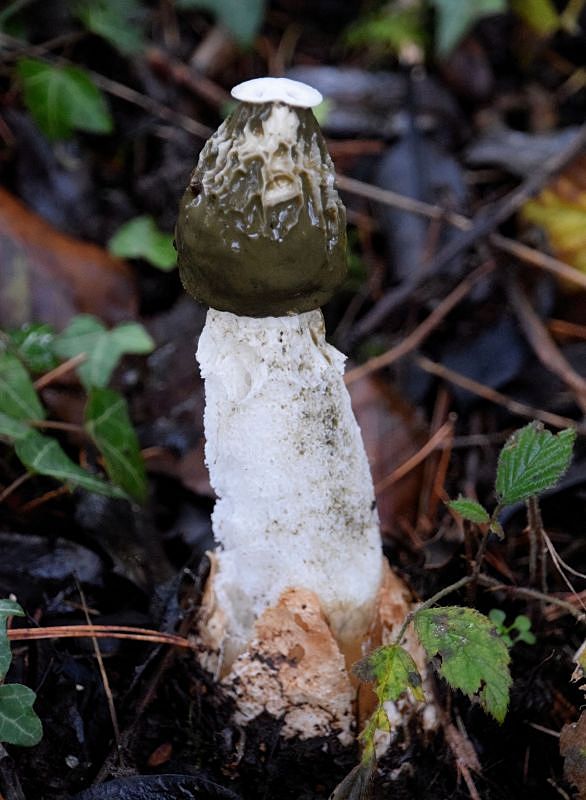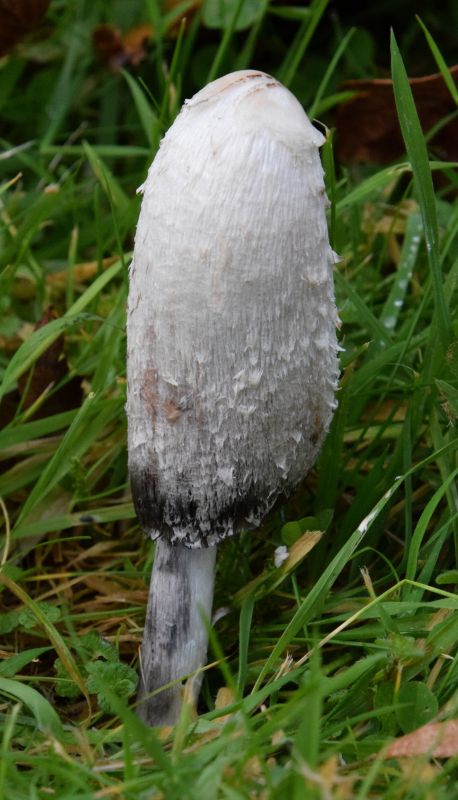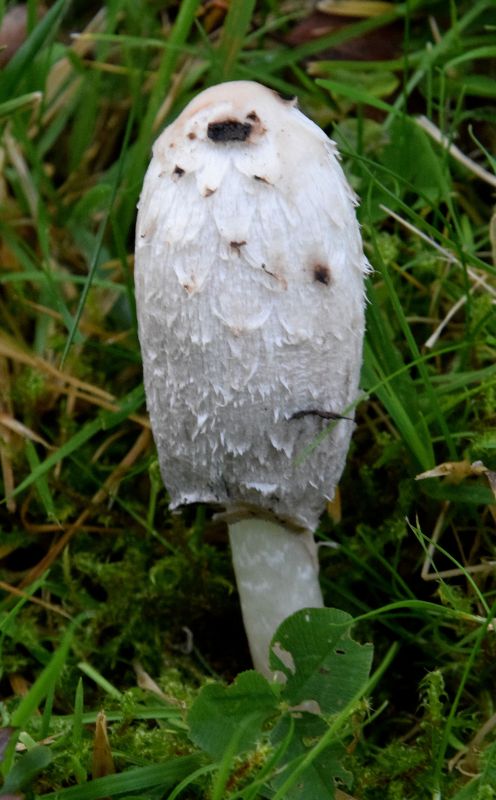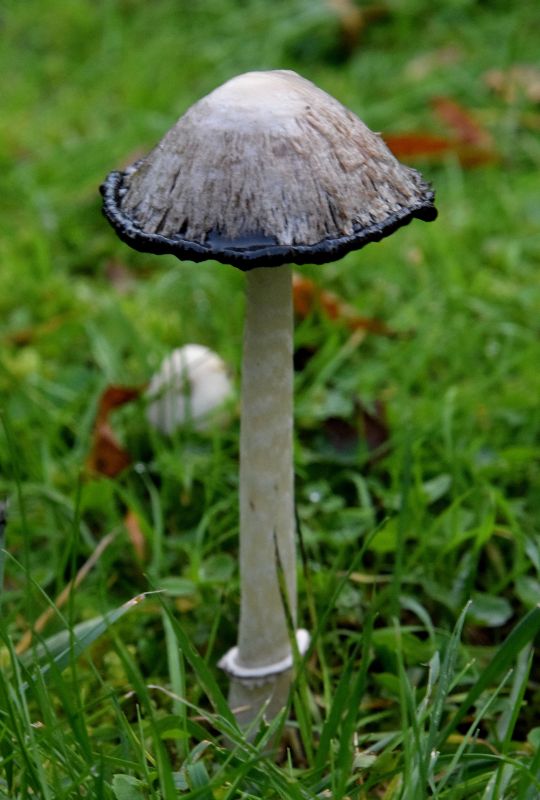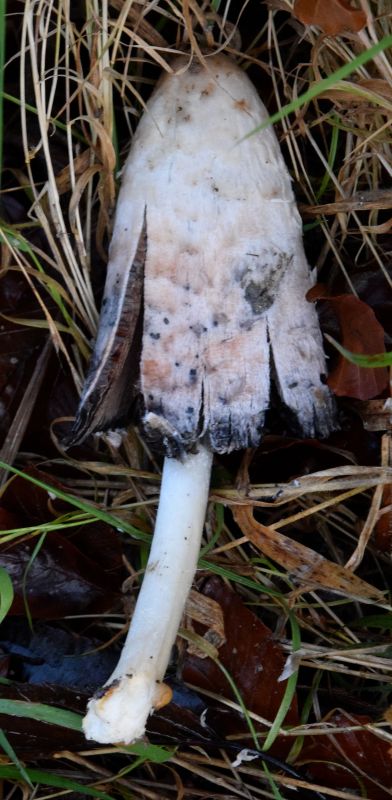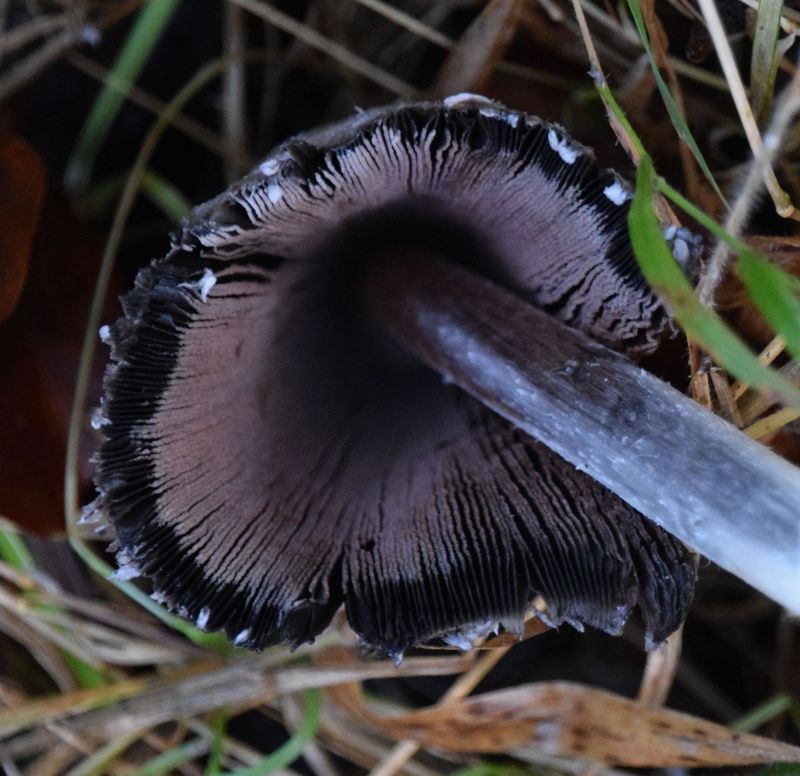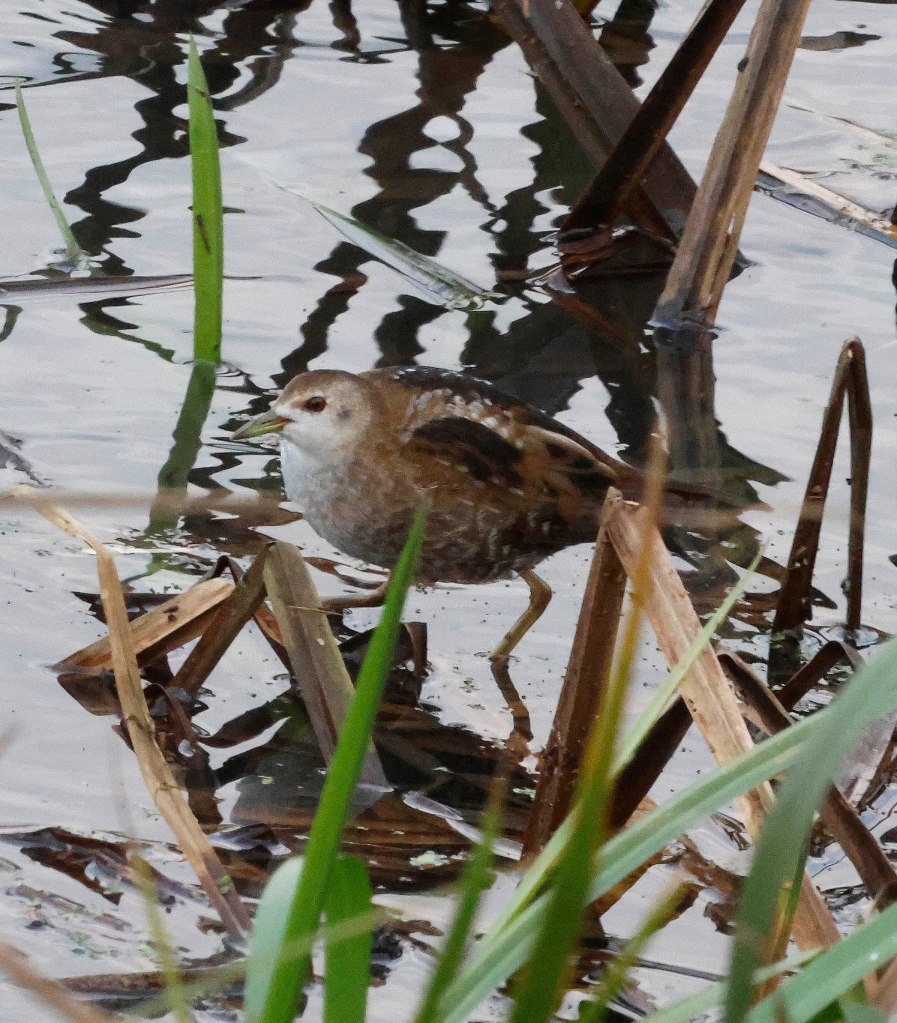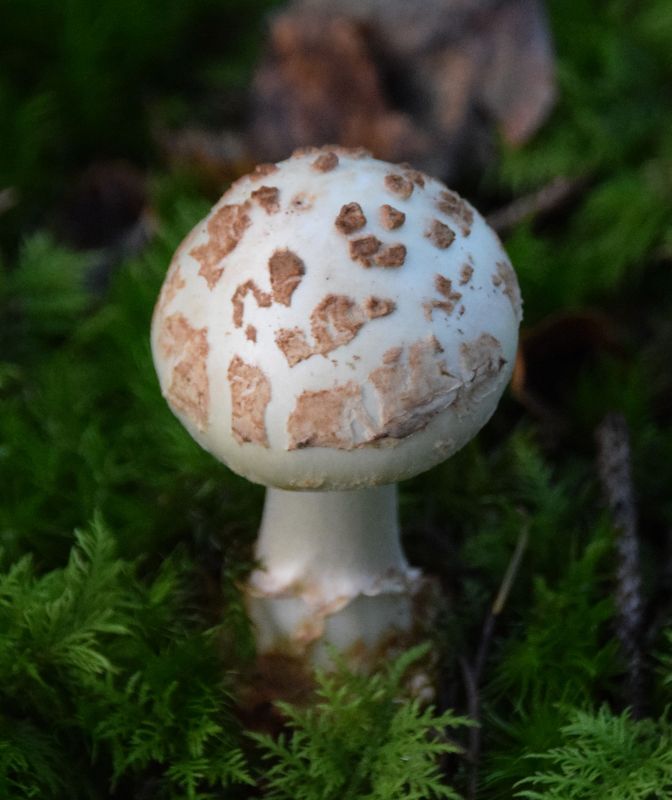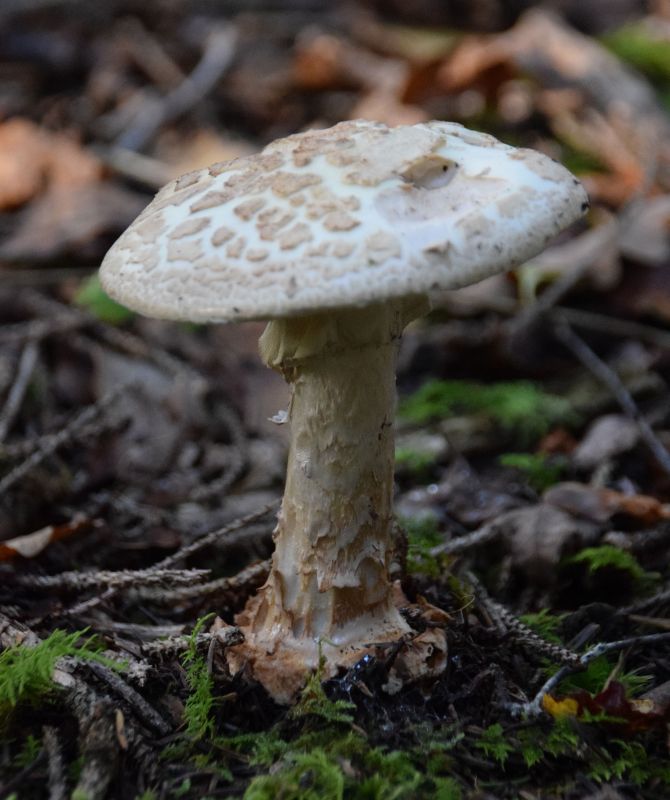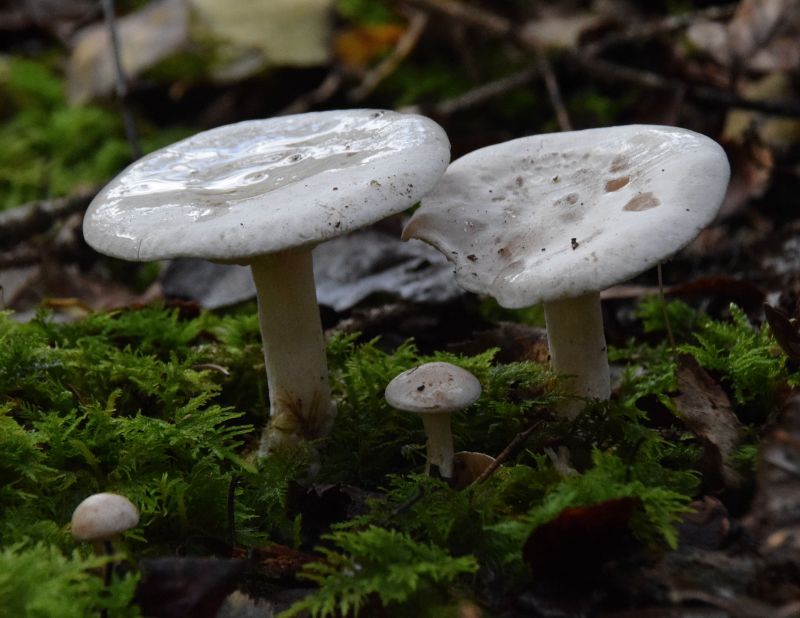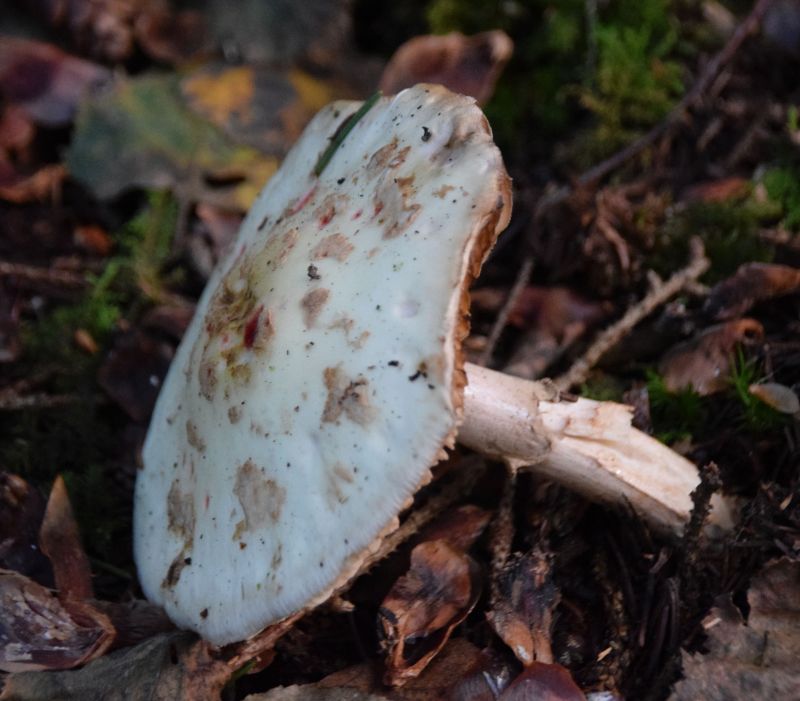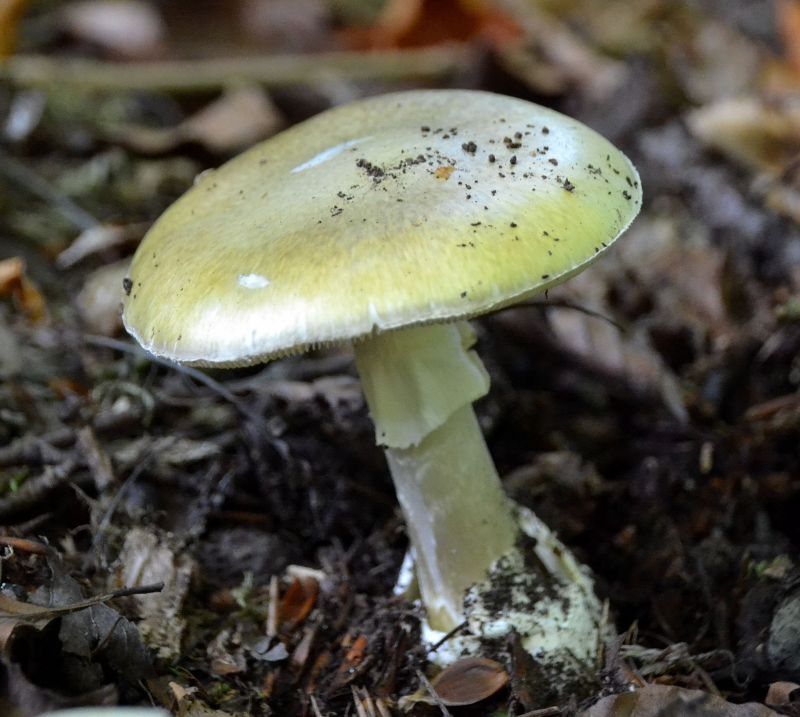Normally I talk about long-term wildlife targets “falling” upon conversion, but that doesn’t seem the most apt phrase in the first instance that follows. I spent this morning in a churchyard that has a reputation in my neighbouring county of Bucks for its variety and scarcity of fungi, especially wishing to observe the site speciality Scarlet Waxcap. Others of that genus were apparent immediately upon walking in, then I noticed something black and white and fairly large close to a boundary hedge.
Walking over and realising what it was I exclaimed: “Oh, you beauty” upon beholding a prime Common Stinkhorn (Phallus impudicus). I keep an eye open for these must-sees every late autumn, and just three previous records to date were gone over, broken and puny in that order. This one (pictured below) was rather more the ticket. And there it was: brooding, moody and almost magnificent in the subdued light of its chosen surroundings.
I say “almost” because maybe nothing conveys the fragility of newly emerged mushrooms and their immediate attack by slugs more than the expanded polystyrene-textured stems of this small group. In that regard today’s around 14 cm tall specimen looks less striking now herein than it did in the field. But the dark olive, slime-covered tip shows it is still young. The partially buried, egg-like ball from which the erect stipe thrust upward was impressive indeed, being at perhaps 8 cm in diameter much more substantial than those of Dog (see here) and Devil’s Fingers (here) stinkhorns I have observed in the past.
This is a not uncommon fungus throughout the British Isles, continental Europe and parts of north America; but being so short lived they are difficult to locate at the pictured stage. Unfortunately, this late in the season there were no flies in attendance to attack and thereby pollinate today’s mildly smelly item as they quickly do, which could explain why the slime or gleba was still intact while the stem was already deteriorating. Dawn is said to be the best time at which to locate Stinkhorns that have burst from their eggs overnight in pristine condition, before either flies or slugs get to work, if you might know where to look for them. Once the gleba has been dispersed the white stipes may persist for several days.
I was very pleased to have stumbled upon this much sought item today. After walking on from the encounter I was engaged with by the vicar, who knows his mushrooms and is well used to mycologists being around the place. The location is Holy Trinity churchyard, Prestwood (HP16 0HJ – SU 874996) where fungi and wild plants survive that occur nowhere else in the region (see here). The site represents a rare remnant of original acid grass heath that was once prevalent on ancient Chiltern commons but almost all destroyed when enclosed in the mid-19th century. Here the combination of no agri-chemical fertiliser or pesticide use, regular mowing and removal of cuttings, creates ideal conditions for what is known as a “Waxcap grassland” in which that group of often diminutive mushrooms flourish. The number of species recorded here puts it amongst the best known sites.
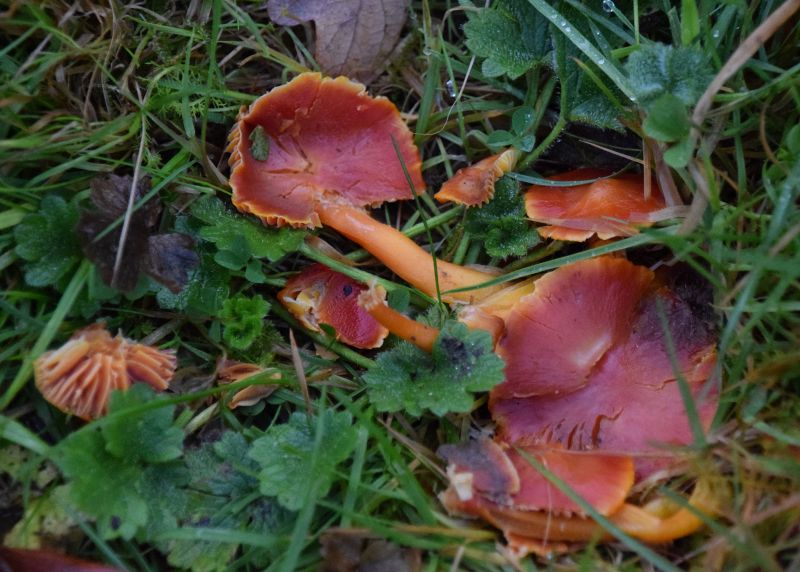
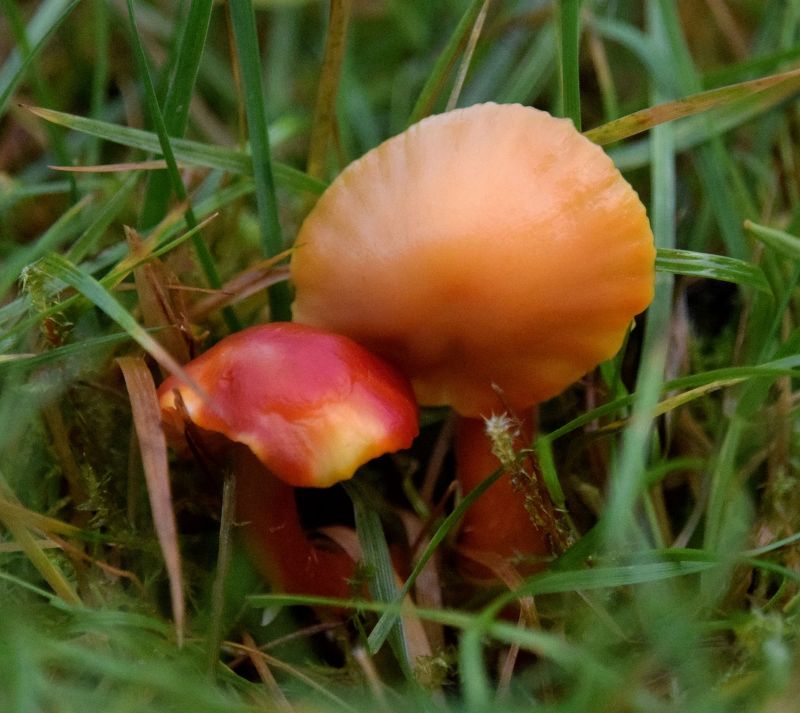
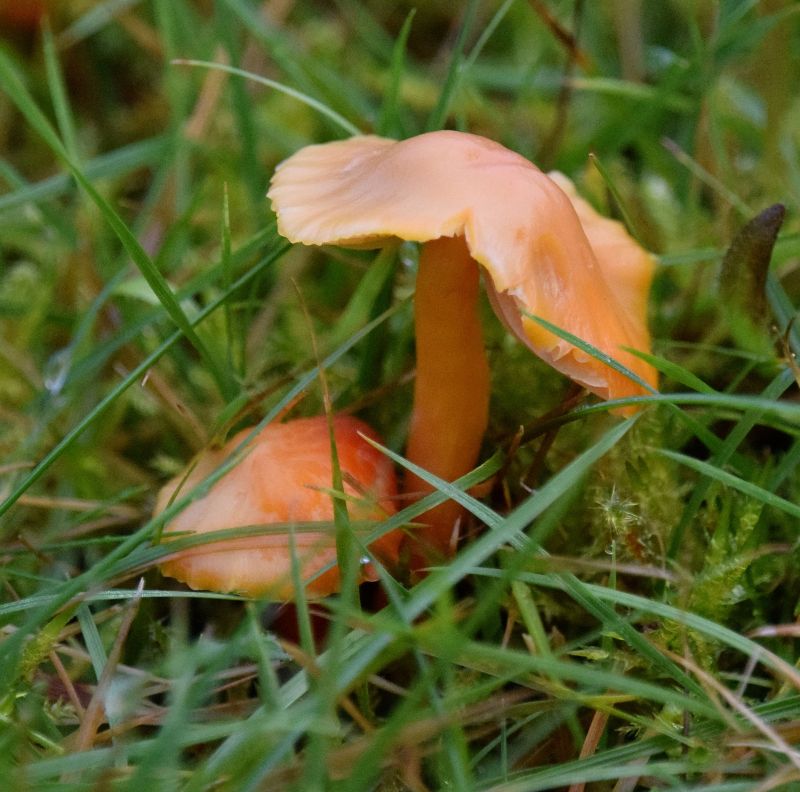
Scarlet Waxcaps, a colourful churchyard speciality
My host now showed me a cluster of Scarlet Waxcap (above left), my original reason for visiting, but they had unfortunately been run over, carelessly by something that had left a tyre mark in the turf. I nonetheless located a few intact specimens here amongst more Waxcap species and other habitat specialists that I do not feel experienced enough to discuss. Scarlet Waxcap (Hygrocybe coccinea), also known as Scarlet Hood is most usually found from September to November on cropped grassland, old lawns, parkland and churchyards with plenty of moss. The caps are 2 to 5cm in diameter and slimy when young, fading from blood red through orange to yellowish from the edge as they age. The stems and gills are similarly brightly toned.
My top target for today had thus been converted, and with the bonus of a truly stonking Stinkhorn this was a memorable foray in an environment that quite literally seemed from a former age. I will definitely be paying more attention to other churchyards and their fungi in the future.

